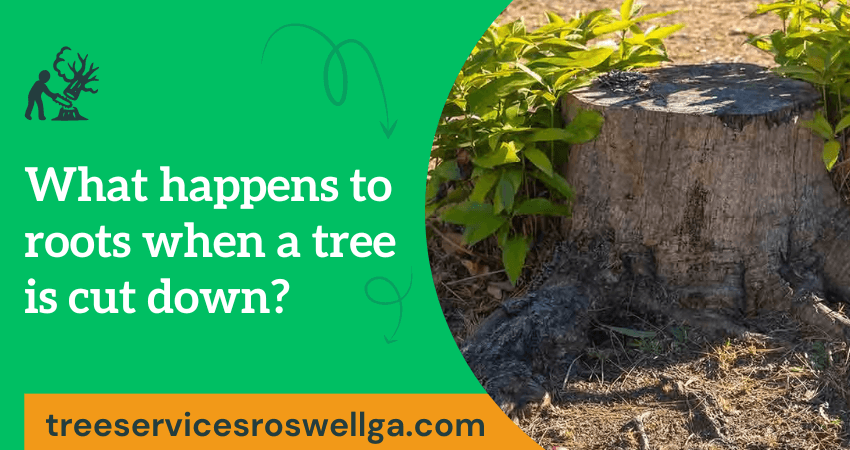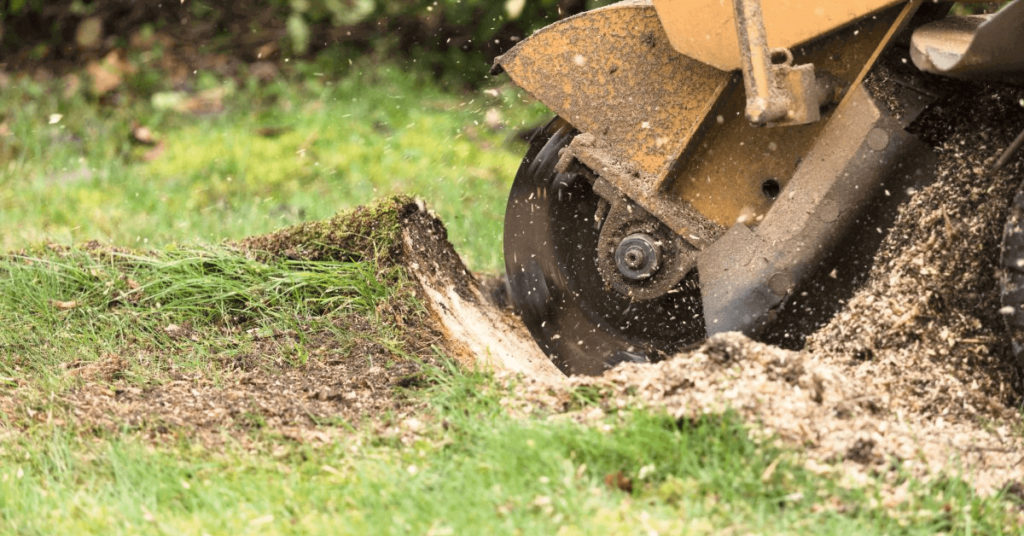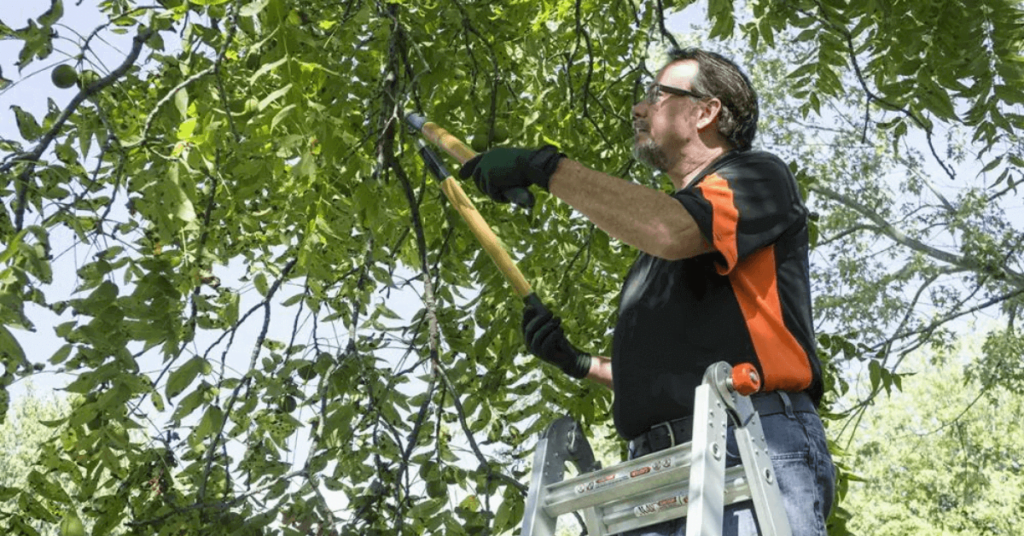Trees play a vital role in our ecosystem by providing oxygen, reducing carbon dioxide levels and stabilizing soil, among other benefits. However, there are times when trees need to be cut down, such as for land clearing, construction or when they become a safety hazard. When a tree is cut down, many people wonder what happens to the roots. Do they die off, continue growing or rot away?
In this topic, we will explore what happens to roots when a tree is cut down and the impact it has on the surrounding ecosystem. By the end of this discussion, you will have a better understanding of the aftermath of tree removal and the long-term implications it has on the environment.
What happens to roots when a tree is cut down?
Generally, when a tree is cut down, the roots will die. In some cases, the root system may survive and begin to send up new shoots (called suckers) from the existing root system. However, in most cases, when a tree is cut down, the roots no longer receive energy or resources from the top of the tree and eventually die.
Additionally, if the roots are disturbed or damaged by the cutting process, they may not be able to survive and will eventually die as well. The exact amount of time it takes for a root system to die when a tree is cut down can vary based on different factors.
In some cases, the stump and roots of a tree may be left in place after it is cut down. This is called a “stump-sprouting” system and can allow for some of the root systems to survive. The remaining roots will still need resources to survive, so they must compete with other trees or plants in the area for water and nutrients. If the area is not well-managed, the roots may eventually die from a lack of resources.
Effects of Tree Removal on the Surrounding Environment.
Tree removal can have a drastic impact on the surrounding environment. Some of these include:
- Loss of habitat: Tree removal can lead to the destruction of habitats for animals and plants. Trees provide food, shelter and space for many species which cannot be replaced if they are removed.
- Soil erosion: Without trees, the soil is more exposed to wind and water erosion. This process can strip away the topsoil, leaving behind barren land and increasing the risk of flooding.
- Reduction in carbon sequestration: Trees are vital for absorbing and storing carbon dioxide from the atmosphere which helps to reduce global warming. Removing trees can drastically reduce this ability and increase the amount of carbon dioxide in our environment.
- Increase in pollution: The removal of trees can have a negative impact on air quality by allowing pollutants to reach the ground. This can cause respiratory problems for humans and animals.
- Loss of shade: Trees provide shade which keeps our cities cool in hot weather. Removing them takes away this natural cooling system and increases the temperature in urban areas.
- Loss of biodiversity: Tree removal results in the destruction of natural ecosystems which can lead to a decrease in biodiversity. This is particularly damaging for species that are already endangered or vulnerable to extinction.
- Destruction of natural beauty: Trees add beauty and character to a landscape, creating visual interest and improving the overall environment. Removing them can take away from the aesthetic quality of an area.
- Lower property values: Tree removal can reduce property value in an area as it decreases the overall appeal and desirability of a location. It also increases energy costs as trees provide natural insulation which helps to keep homes cool in summer and warm in winter.
- Increase in stress levels: Studies have shown that being surrounded by nature has a positive effect on our mental health and can help to reduce stress levels. The removal of trees can take away this stress-reducing benefit.
Ways to mitigate the negative effects of tree removal.
Tree removal can have negative effects on the environment and surrounding ecosystems but there are several ways to mitigate these effects:
- Plant new trees: Planting new trees can help to replace the lost habitats and resources that were removed. This also helps to reduce soil erosion, improve air quality and increase carbon sequestration.
- Promote conservation: Encouraging people to conserve natural resources can help to prevent unnecessary tree removal. Education campaigns and incentives can help to reduce the demand for resources and prevent deforestation.
- Replant in disturbed areas: Planting trees in previously disturbed areas such as clear-cut forests or urban development sites helps to restore the natural environment and promote biodiversity. This also helps to improve air quality, reduce soil erosion and increase carbon sequestration.
- Support reforestation projects: Supporting reforestation projects helps to plant new trees and increase the amount of carbon dioxide that is stored in the environment. This can help to reduce global warming and keep our planet healthy.
- Protect existing trees: Ensuring that existing trees are protected from deforestation or other environmental damage can help to maintain the local environment and prevent negative consequences such as soil erosion, air pollution and climate change.
- Transplant trees: Transplanting trees can help save trees that would otherwise be removed. This is a good option for trees that are healthy and mature.
- Promote biodiversity: Trees provide important habitats for wildlife. When removing trees, it is important to consider how this will impact local biodiversity. Planting a variety of native plant species can help promote biodiversity and provide a habitat for wildlife.
FAQs
How long does it take for tree roots to decompose?
The rate of decomposition for tree roots depends on a few different factors. Environmental conditions such as temperature and moisture, the type of soil that the root is embedded in and the type of trees can all influence how quickly or slowly the root decomposes.
In general, however, it takes anywhere from three to 10 years for tree roots to decompose fully. This process can be accelerated by tilling or adding compost to the soil, both of which provide beneficial nutrients for microorganisms that break down organic matter.
By speeding up the decomposition process, tree roots can become an important source of energy and nutrients for plants in a garden or landscape setting.
How do you get rid of tree roots after you cut the tree?
Once you have cut the tree down, there are several options for removing the roots.
- The first option is to physically dig out the root system using a shovel or other tool. This process can be time-consuming and labor-intensive but it is often necessary if you need to remove the entire root system from an area.
- The second option is to use a tree stump grinder or root cutter. These tools are specially designed to grind down, cut and remove the roots of trees without damaging surrounding plants or structures.
- A third option is to use chemicals such as sodium chloride to kill the roots.
- Finally, burning is another option for removing tree roots after they have been cut down.
Whatever option you choose, make sure to follow proper safety protocols when dealing with potentially hazardous materials. And be aware that removal of the tree’s root system may cause structural damage to your property, so consult a professional arborist before attempting any of these methods.
Final Thought:
When a tree is cut down, the roots do not immediately die. Instead, they go through a process of decay that can take years. During this time, the root system may continue to produce sprouts or suckers that can grow into new trees. Additionally, the remaining roots can continue to provide nutrients and support to nearby plants and microorganisms.
However, over time, the root system will eventually die off and the nutrients stored in the roots will be released into the soil, enriching it for future plant growth.
Ultimately, the fate of a tree’s roots after it is cut down depends on a variety of factors, including the species of tree, the age and size of the tree and the conditions in the surrounding environment.



